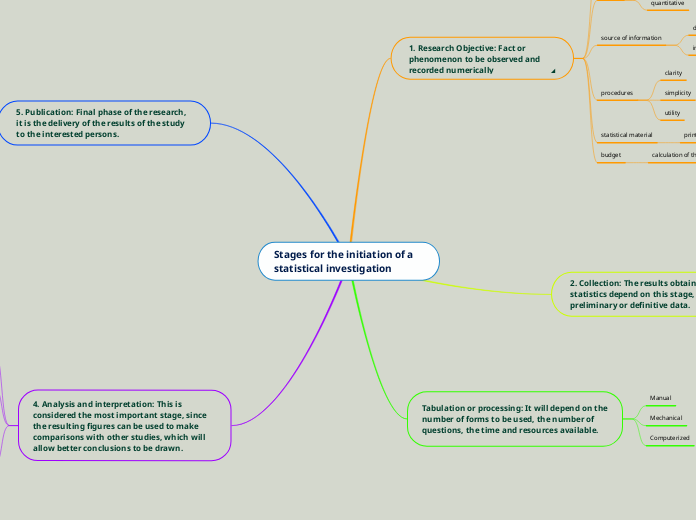Stages for the initiation of a statistical investigation
1. Research Objective: Fact or phenomenon to be observed and recorded numerically^
Purpose of the research
nature
qualitative
quantitative
source of information
direct
indirect
procedures
clarity
simplicity
utility
statistical material
printed and instrumental
questionnaires, forms
budget
calculation of the cost and financing
2. Collection: The results obtained in the statistics depend on this stage, and may be preliminary or definitive data.
distribution of the collection material or element
the collection itself
control of the number of collected forms
quality control of the information collected
critique and coding
primary material classification
good stuff
wrong but correctable
uncorrectable or disposable material
Tabulation or processing: It will depend on the number of forms to be used, the number of questions, the time and resources available.
Manual
Mechanical
Computerized
5. Publication: Final phase of the research, it is the delivery of the results of the study to the interested persons.
Statement of the problem
hypotheses to be tested
Brief explanation of the methodology used
Appendices when applicable
4. Analysis and interpretation: This is considered the most important stage, since the resulting figures can be used to make comparisons with other studies, which will allow better conclusions to be drawn.
analysis and statistical evaluation of results
In his book How to do research in education, Professor Jhon W. Best suggests the following points for analysis:
1. title
2. Problem
review of related bibliography
procedures used
data analysis
summary of findings
